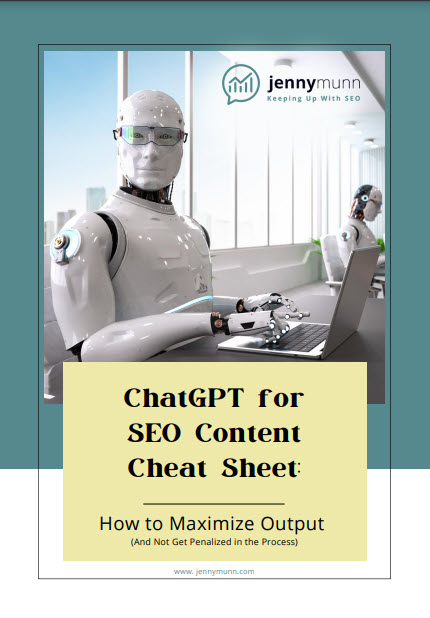 Your Approach to Search Starts Based on These 2 Things
Your Approach to Search Starts Based on These 2 Things
It is a truth universally acknowledged that if you’re not getting the SEO traffic you think you should be getting, that most likely something is “wrong” with your website.
You know, like your web designer accidentally forgot to flip the SEO switch. Or mistakenly blocked key pages in your robots.txt file. Or silly you, you forgot to submit your site to Google (not really a thing).
All you know is your site isn’t ranking prominently for your important terms, and you’re crossing your fingers hoping that something is “wrong.”
I hate to be the bearer of bad news, but that’s rarely the case.
Unfortunately, what I see “wrong” with SEO comes down to 2 critical elements: demand and competition.
SEO Foes: Demand and Competition
Let’s lay the groundwork first. Sure, everyone would like better SEO. Because savvy marketers know you never get to “done” with SEO (#damnit). This is the same with social, or conversion rate optimization: you’re never done—there’s just better improvement and optimization over time.
If you’ve done well but want better, you can stop reading now.
This article is for those of you who have never quite gained that critical traction when it comes to regularly ranking for those terms that are important for your industry, products, services, solutions, and information. And this is also assuming you’ve attempted to lay your SEO foundation and have no glaring technical issues.
Based on those two assumptions, let me introduce you to the foes of SEO success: demand and competition.
Demand
A critical piece of SEO is that it’s dependent upon how direct the demand is for what you have to offer.
When I first start talking with someone interested in my consulting services, my line of questioning very quickly zeroes in on one line of thinking: is their market actively searching for the products or services they have to offer?
- If NO: then my line of questions turn to this: are they in a new market? Are they offering new, progressive services? And essentially, is their target market actively looking for them? (SIDENOTE: That word ACTIVE is critical by the way. SEO is not a passive marketing channel. In order to drive traffic, and get SEO results, you must center your strategy upon a question, or pain point your market is actively looking for solutions for. Whether they know that you are the answer to their prayers.) If your market is not looking for you, then we must start our SEO adventure by determining: well then what ARE they looking for? What is your market doing now, if not using you? Are they using a competitor? An inferior alternative? Sitting on their thumbs doing nothing? That’s the first place then we need to start. Content marketing is critical in this instance, as you will need a lot of content and a lot of education in order to get SEO traction going. And not to mention the human element of getting out there in front of people which will contribute to SEO (backlinks, social mentions, other website traffic channels). Don’t forego SEO as there is still a huge opportunity, but of course with indirect you’ll know that you’re in it for the long haul.
- With a channel like SEO that’s dependent on showing up for keywords, you need to make sure the keywords you’re using are actually being used by the people who are most likely to buy your product or services. If you’ve ever heard one of my talks, you know that consistently, one of the biggest mistakes I see when it comes to foundational SEO is that you’re not using the language of your customer. Marketing 101: keywords = the language of your customer.
If YES: your customers ARE searching for you, see the next paragraph.
Competition
Here’s where things get interesting. If you’re not offering something new or progressive, and your target market is familiar with the products and services offered by you and your competition, then let’s discuss the crux of SEO and one of the biggest challenges I see: the SEO savviness of your competition.
Here’s what I mean by that: select the Incognito mode in your browser, and then Google a few of your most important keywords. Who is at the top for the keywords you want? What companies/URLs? Scroll down page 1. Repeat that a few more times for different keywords. Now, are the URLs that are there websites your business can realistically out-seat and out-rank?
The reality is, almost every industry out there is competitive these days. Everyone is just much more digitally aggressive than they used to be. But getting crystal clear on a plan of attack is the secret sauce to giving you more prominent ranking and visibility in organic search.
If competition is your biggest challenge, then you know where to start. For example, is your on-page SEO as tight as it could be? Should you turn attention to building links or working with influencers? Have you gone after long-tail versions of your core keywords?
Another under-utilized tactic is identifying media elements for your critical pages and adding schema markup and content to give you the bump you need. According to Kissmetrics, the correlation of websites that rank high and those who have done markup is strong: “Websites that use schema markup will rank better in the SERPs than companies without markup. One study determined that websites with markup rank an average of four positions higher in the SERPs than those without schema markup.” According to Searchmetrics, only 0.3 of all websites use schema markup, so the opportunity is significant.
By taking a closer look at demand and competition and identifying which one is your weak suit, you can double down, feel confident about your SEO strategy, and make sure you’re focused on the right mix of tactics, and the right direction, to get you there as quickly as possible.
Now it’s your turn: what do you find to be your biggest foe when it comes to SEO strategy? Share with me in the comments below!
Jenny Munn
Latest posts by Jenny Munn (see all)
- Four 2024 SEO Planning Tips for World Domination - November 16, 2023
- SEO Planning Tip: Why You Need a CYA Clause - November 3, 2023
- How Long Does SEO Take to Show Results? (Updated for 2023) - August 9, 2023



2 Comments
Once again, Jenny, a very thoughtful and insightful post. The smart questions you ask under ‘Demand’ certainly can help align content marketing with other SEO efforts. But as a writer, you know that they are also the exact questions to ask when creating home page and product page marketing messages, to make a genuine connection with the visitor. So maybe it’s a four-legged stool: personas, SEO, content, and messaging. What’s funny to me is, I don’t see many industry bloggers talking about that level of alignment.
Thanks, Tom! Exactly – I credit my SEO wisdom to good copywriting fundamentals.